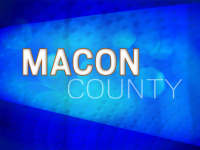WCU celebrates retention milestone, looks toward future enrollment challenges
 Meeting a deadline five minutes ahead of time can be challenging, so after meeting an important enrollment goal five years early, leaders at Western Carolina University are celebrating.
Meeting a deadline five minutes ahead of time can be challenging, so after meeting an important enrollment goal five years early, leaders at Western Carolina University are celebrating.
The university has battled low retention rates for years, but it has now reached the magic number of 80 percent — meaning that 80 percent of last year’s freshmen returned to campus for their sophomore year this fall. Less than 10 years ago, in 2007, the figure was down at 67 percent.
“I think that retention is the work of everybody on campus,” said Lowell Davis, WCU’s assistant vice chancellor for student success. “It’s not something that’s in academic affairs. It’s not something that’s in student affairs. Everybody plays a role.”
A few changes outside the academic sphere might have contributed to the increased retention, said Tim Metz, assistant vice chancellor for institutional planning and effectiveness. The recent successes of the football team and marching band, for example, might be increasing student satisfaction by giving them something to rally around as Catamounts. Marketing aimed at emphasizing WCU’s place as a Mecca for people who want to spend their weekends hiking or fishing or mountain biking — not those who would rather visit a shopping mall or take in an urban bar scene — has ramped up, helping to create a student body that’s more predisposed to like what Western has to offer.
It’s also possible the 2012 legalization of countywide alcohol sales made a difference. Before, students had to drive all the way to Sylva to buy a drink. Like it or not, alcohol is part of the college experience, so some students might be happier in Cullowhee being able to pick up a six-pack from the corner gas station.
But one of the most significant changes where student retention is concerned happened in 2013, when the university created the position of assistant vice chancellor for student success — Davis’ job.
Related Items
“His efforts and the efforts of the staff underneath him we feel had a lot of to do with the improvement in retention rate,” Metz said.
A lot of Davis’ work focuses on what he calls “intrusive advising.” His office pinpoints groups of students considered at the highest risk of dropping out — transfer students, first-generation college students, students coming from the foster care system — and assigns them a counselor to check in at specific points during their first year on campus.
“We attempt to have multiple conversations throughout the year,” Davis said. “We check in with the students when they first come to campus. We interact with them when their fifth week grades come out.”
Students who are failing three or more classes come week five, Davis said, are then required to meet with an advisor before scheduling their spring classes. The goal is to create as many check-in points as possible to make sure potentially struggling students are doing OK and, if they’re not, that they get the help they need to turn it around.
Of course, it doesn’t always work. Some students leave their freshman year and don’t return. When that happens, the university tries to find out why. Students have the option to request a follow-up call, which gives academic affairs the chance to find out if there’s anything the university can do to make it possible for the student to come back.
“A lot of students mentioned they were going back home to handle either financial obligations or they needed to go back home to take care of family issues,” Davis said. “So it’s not that students don’t want to be at Western. It’s something external to the situation.”
At least, according to those students who do return the survey. Not all of them do.
But regardless of survey return rates, the improvement in retention is undeniable — an exciting stat for a university that’s long struggled with that metric.
In 2007 one-third — 33 percent — of freshman students didn’t come back the next fall. Retention climbed to 76 percent in 2009 and then worked its way down to 72 percent in 2011. By 2012, WCU was seeing a retention rate of 74 percent, and the university endorsed a strategic plan calling for an 80 percent retention rate by 2020.
Compared to nearby universities, WCU’s retention numbers were way low. Appalachian State University, for example, had an 87.6 percent retention rate in 2012. For University of North Carolina Asheville, 78.4 percent of students who enrolled in fall 2011 came back in fall 2012.
But compare the university to like institutions — regional universities in the South — and the story is a little different. According to the U.S. News and World Report, WCU occupies the 34th spot on a ranked list of retention rates for 126 such universities. The 76 percent retention rate shown there is based on an average of the retention rates from 2010 through 2013. Other schools on the list showed rates ranging from 92 percent for Union University in Jackson, Tennessee to 45 percent for South University in Savannah, Georgia.
Looking toward the future
This year was a win for retention, but keeping enrollment and retention numbers high will likely have WCU on its toes over the coming years.
“The issue that keeps me awake at night is enrollment,” Chancellor David Belcher told the school’s board of trustees when addressing the issue this summer.
In pure numbers, WCU has been doing great on the enrollment front. In both 2013 and 2014, the university saw record numbers, with a high of 10,382 students enrolling for fall 2014, a number that includes students who take classes online or at the Biltmore campus in Asheville. Numbers declined very slightly this year, with 10,340 enrolled — university officials are calling it steady.
But demographic trends indicate that WCU might have to up its game in the years ahead.
“We’re trying to look into the distance — five years, seven years from now — and trying to figure out what the population could be for us and reacting now,” Belcher said.
Over the next decade or so, the overall number of high school graduates is expected to dip — a trend perhaps influenced by people having fewer children during the years surrounding 9/11 and the recession, Metz said — and the racial and ethnic mix of high school grads will likely shift. According to the Western Interstate Commission for Higher Education, between 2013 and 2027 the number of white high school graduates will decrease by 11 percent while minority graduates will increase, with Hispanic grads expected to grow by 36 percent and Asian grads by 41 percent.
That means that colleges and universities will be competing for students in a pool with fewer potential enrollees and different demographic characteristics. The dip in overall numbers might not affect WCU as much, as population in the South is expected to grow slightly while the Northeast and Midwest will decline — but the university will have to deal with the demographic changes.
“The very nature of the kinds of students that we’re going to be recruiting — their life stories, their socioeconomic status, their ethnicity — is going to be different than we’ve seen in the past,” Sam Miller, WCU’s vice chancellor for student affairs, told the board of trustees when presenting with Belcher this summer.
For instance, the average Hispanic or Asian student isn’t nearly as willing to travel long distances to attend college as the average white or black student, according to data compiled by WCU. The mean travel distance for Hispanic students is 39 miles, while it’s 60 miles for Asians. Compare that to 102 miles for white students and 98 miles for black students.
Given the fact that most of WCU’s out-of-region students come from the Triangle area and Charlotte, that preference could cause problems down the road.
“There are literally dozens of institutions that some of our prospective students have to drive past just to come out here for a tour,” Miller said. “We really have to be on top of our game.”
Over the next few years, the university will have to develop a strategy to attract students who might be more reticent to attend a school that’s hours away from home. Perhaps, for instance, it would help to develop a strong pre-college program, allowing prospective students to experience life in Cullowhee for a week or so in the summer and make them more likely to travel the distance.
“Whether or not that would work I have no idea, but having some programming in place that would allow them to experience the area and Western over a short period of time (might help),” Metz said.
Another significant demographic difference is family income. The average white high school grad has a mean family income of $83,000, and the average Asian student has a family income of $95,000. Meanwhile, the average Hispanic high school grad — the demographic expected to produce the most future increase in high school grads — has a mean family income of $54,000.
“We’ve competed for years based on our affordability, and we’ve talked about how we don’t necessarily have the scholarship to offer you, but we’re very affordable,” Miller said.
However, increasingly scholarships are the name of the game, he said, with students expecting to get some sort of break off the sticker price when they enroll.
Changing that could be hard for WCU. Analysis of the school’s scholarship awards compared to those of other area North Carolina public universities shows that, while WCU is the least expensive, it also offers the lowest scholarship opportunity.
“WCU gives fewer big scholarships and has only one program, whereas other schools have multiple comparable (scholarship) programs,” Miller said.
The solution? Launching a campaign to begin a scholarship endowment so the university can attract able students who don’t have the means to pay tuition, Belcher said. That’s still an idea without details pinned down, but the goal will probably be somewhere in the tens of millions.
“I know that’s ambitious, but I just don’t think we can lower our ambitions,” Belcher said.
At the same time, he said, the university needs to be conscious about keeping its costs low so tuition increases remain modest.
WCU must also address the cultural differences inherent to any demographic change, whether that is based on race, religion, wealth or any other characteristic. To that end, it’s launched a search for a chief diversity officer, someone to help make WCU a place where people who vary from the “norm” can feel at home.
Data just coming in on WCU’s 2015 student body gives some encouraging signs. Within that 80 percent freshman retention figure are big gains for Hispanic and mixed-race students. The retention figure jumped 16.2 percent for Hispanics and 20.4 percent for students of two or more races over last year, while retention for black and white students fell slightly, 1.2 and 1.4 percent respectively. That’s pretty significant, especially considering that the area immediately surrounding WCU is overwhelmingly white.
The road ahead might be challenging, Belcher said, but it’s not un-navigable.
“Western Carolina University is in really good shape,” he said. “Everything you’ve seen about where we are is going in the right direction. We’re taking on a tough agenda in a challenging landscape, and we’ve succeeded.”
By the numbers
• 80 percent freshman to sophomore retention rate in 2015
• 72 percent freshman to sophomore retention rate in 2011
• 16 percent retention increase among Hispanic students from 2014 to 2015
• 20 percent retention increase among students of two or more races 2014 to 2015
• 1 percent retention decrease among black and white students from 2014 to 2015
• 36 percent expected increase in Hispanic high school grads by 2027
• 41 percent expected increase in Asian high school grads by 2027
• 11 percent expected decrease in white high school grads by 2027
Source: WCU









